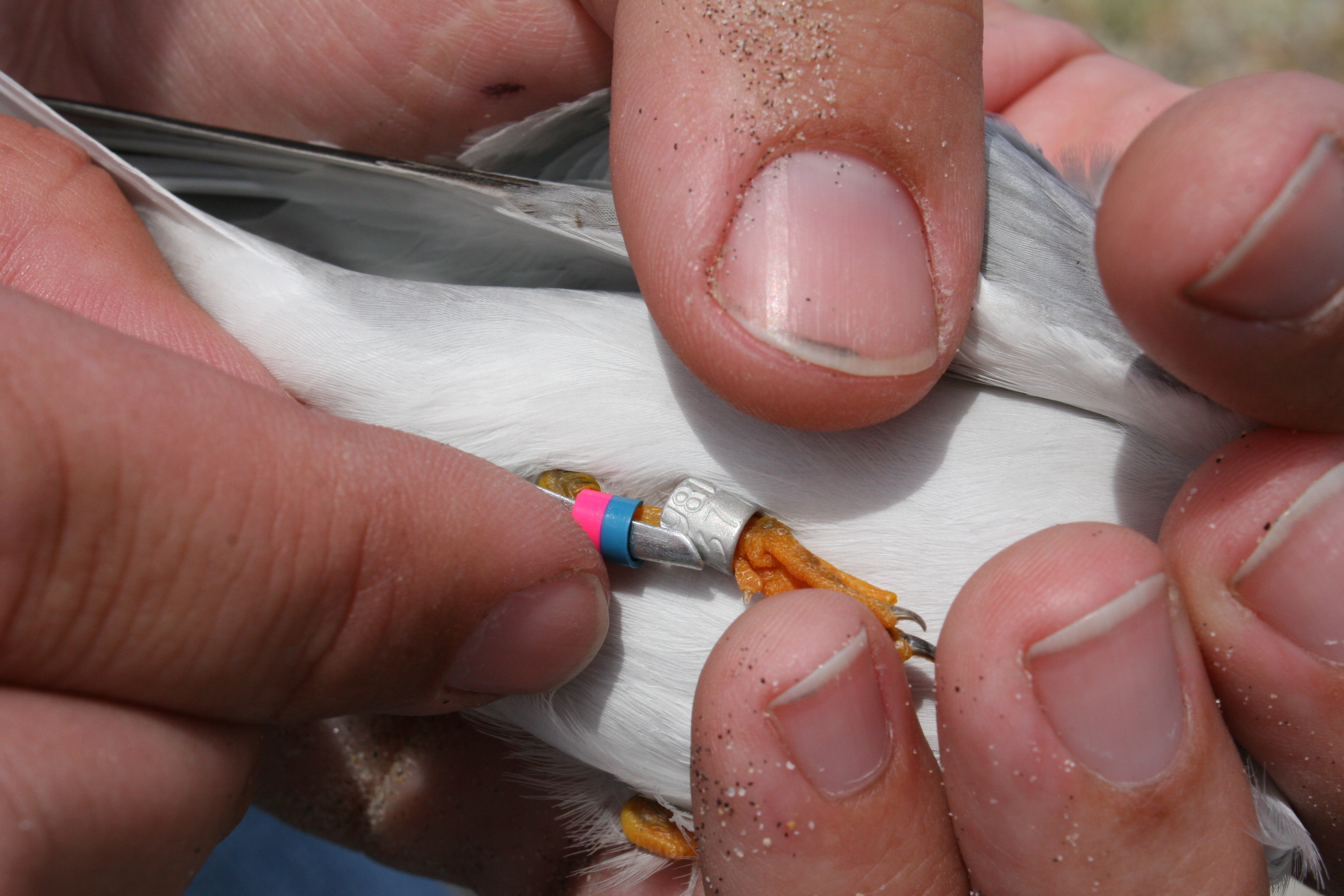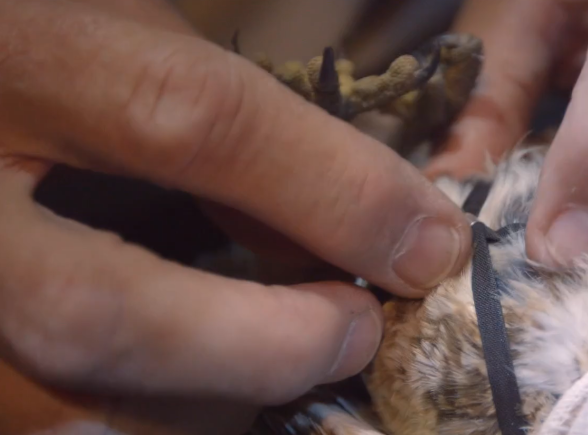Methods
Summary
We are excited about using novel GPS tags that are now small enough (weighing ~ 1 gm) that they can be used on California Least Terns, which are small seabirds (typically weighing ~30-45 gm).
Working with our partners, our team has been banding California Least Terns to identify individuals and track their movement, survival, reproduction, and life history. Bird banding has been crucial for providing baseline data on the species as birds are re-sighted over the same year and over multiple years and locations.

Adult California Least Tern being banded with uniquely numbered and coloured bands. (Photo: J. M. Allen).
Challenges
The particular GPS tags that we will use have not been deployed on California Least Terns before. A challenge with any instruments on seabirds is that long-term exposure to salt water, and the small mass of many birds, have often limited our ability to use more accurate devices that can yield useful data on other larger species. An exciting development is the small size of novel PinPoint GPS tags (Lotek) that can include a marine coating to protect the devices from sea water, while remaining at no more than ~3% of the average body mass of terns.

(Photo: Lotek PinPoint GPS tags)
In addition, similar devices are already being used on other seabirds, and some members of our team already deploy the Lotek PinPoint GPS tags on Burrowing Owls as part of a study at San Diego Zoo (Institute for Conservation Research; this video showcases their work).
(Photo: GPS tags can be placed on birds on their legs or on their backs; here a harness will be used on this Burrowing Owl; courtesy of Colleen Wisinski and SDZG.)
Pre Analysis Plan
For our project, the following steps will be taken to analyse our data for this pilot study.
1. In the 2017 breeding season, adult, healthy and breeding California Least Terns will be fitted with the GPS tags (10 individuals). The birds will be known breeders, previously banded, which are more likely to return to breed the following year.
2. During the 2018 breeding season, the birds will be re-trapped to retrieve the data stored in the devices. This step is needed because these devices are lightweight and accurate, but must be retrieved to access the information that is stored.
3. Wherever possible, we will compare any sightings of our banded birds with the geo-referenced data from the devices along their route. This will be more challenging during the peak winter period where little is known about where birds may be located. Ground-thruthing efforts (and any specifications from the manufacturer) will help improve the quality of data acquisition and data interpretation.
4. When opportunities arise, complementary analyses may be conducted through our collaborators (as part of other projects and under the appropriate permits, such as using stable isotope analyses of feathers) to compare data on the broad-scale location of potential wintering grounds, habitat use, and migration routes. Placing multiple devices on California Least Terns is not feasible due to weight limitations, but on larger species, studies may be ongoing to compare the broad concordance of data from geolocators and GPS tags (e.g. general overlap of locations stemming from the use of different technology, with geolocators being less accurate).
While we anticipate that our initial deployment of ten devices (on ten birds) may yield a very small sample size, this preliminary information will be invaluable to begin to identify the wintering habitat of California Least Terns. Based on other studies, while we also expect that some birds, or some devices, are not resighted (may be lost), the devices that can be retrieved can be re-used, and over time, we anticipate building our sample size over multiple breeding seasons. Over time, using multiple individuals to explore patterns of habitat use by different birds (both sexes, and ideally of different known ages), and in some cases, the same individuals, to explore habitat use over years, we will being to improve our knowledge of critical wintering habitat. Based on other species, we are cognizant that young birds and/or each sex may use habitat differently over the entire year; however, we do not yet know specific patterns for California Least Terns, but ideally, larger sample sizes over time can provide insight into possible patterns revealed in the future.
We anticipate releasing our first results in 2018, with some communications (presentations, reports and outreach products) starting as early as this year.
Protocols
This project has not yet shared any protocols.
